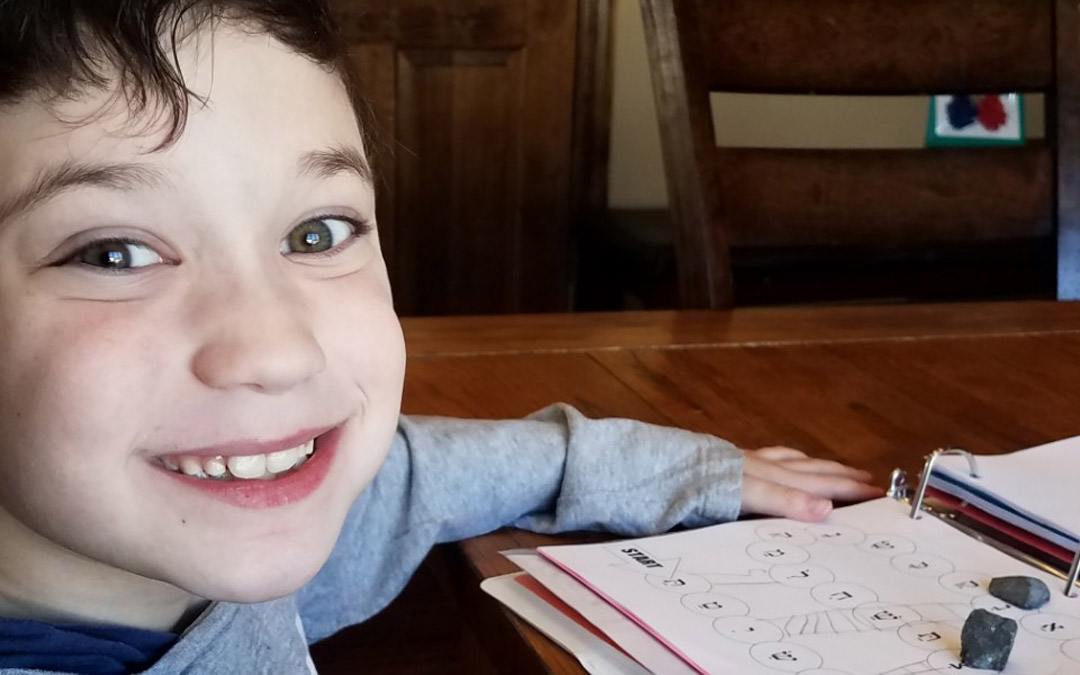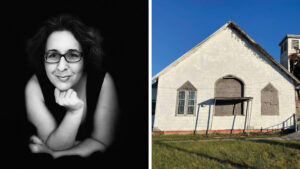This story was sponsored by and produced in collaboration with a foundation that wishes to remain anonymous, and is part of a series titled “On the Bright Side: Stories of innovation and resilience from Jewish non-profits.” This article was produced by JTA’s native content team.
By Eric Berger, JTA
When Racheli Friedbauer was enrolled four years ago in a Jewish special education program, it changed her life.
Due to a rare genetic disorder, Racheli, who’s now 11, has developmental delays and some medical problems, and is extremely shy. But she thrived in the program run by Sinai Schools, a network of special educational schools operating within regular Jewish day school settings.
“It was an environment where she finally was comfortable, and she felt very loved and accepted for who she was,” said her mother, Jill Friedbauer.
Then, in March, the coronavirus pandemic hit and Racheli’s life was turned upside down. Her school, the Sinai Rosenbaum Yeshiva of North Jersey, closed. Teachers and students quickly switched to remote learning.
The abrupt shift was challenging, to say the least. Teachers at first replicated their daily schedule using Zoom. But students with special needs who rely on structure for academic and emotional stability found the change jarring.
The risks of failure could be disastrous for these children.
So educators quickly regrouped and retooled. Students were divided into smaller groups so teaching could be more individualized. Teachers put in more hours. Instructors incorporated more visuals — mastering the ability, for example, to visually focus in on a math problem they were working rather than showing the entire board or front of the classroom.
To combat “Zoom fatigue,” educators added activities to break the monotony, such as twice weekly music sessions that hadn’t been part of the pre-pandemic schedule.
In Racheli’s case, she was able to have physical therapy, math and reading with just one other student (virtually, over videoconference).
Now, educators say the new teaching methods they’ve adopted will be useful even when students can return to traditional classrooms.
“For sure, none of us would want distance learning as an ideal way of teaching our kids,” said Rabbi Yisrael Rothwachs, dean of Sinai Schools. “But since we were thrown into this and had to figure it out quickly, as did the rest of the world, I think we should be humble enough to take a step back and say, ‘What can we learn from this experience?’”
Opening Eyes
About 7 million students in the United States receive special education services, according to the National Center for Education Statistics, including those with autism, emotional issues and learning disabilities.
The Learning Disabilities Association of America estimates that 15 percent of U.S. children have some form of disability. Among Jews, that would constitute approximately 150,000 kids.
While distance learning is not ideal, some students actually have done better than in in-person settings, said Arlene Remz, executive director of Gateways, an organization that provides training to Jewish educators to support a diversity of learners.
“There are students who traditionally needed more support and struggled in class that have really done extremely well online,” Remz said. “Part of it is because they have been able to break down tasks and expectations in ways that they weren’t in the regular classroom.”
David Farbman, Gateways’ senior director of education, said teachers are more attuned to individual learning needs now than they may have been in the classroom.
“They have been forced because of the situation to engage in lots of different modalities,” Farbman said. “Rather than just always have the teachers talking to the students, this has opened their eyes even more to the possibility of how you can reach students in different ways.”
Jewish day school leaders who specialize in special needs instruction have continually tweaked their approaches since distance learning started in March, with encouraging results.
“We have moved towards even smaller class sizes than when we began, which were already pretty small because that’s sort of the model of our special ed school,” said Ilana Ruskay-Kidd, founder and head of the Shefa School, a Jewish special education primary school in New York. “We have moved towards checking in more individually with students because we know that their social and emotional lives are vulnerable — and to be able to maintain connections between teachers and students and administrators and families.”
Ruskay-Kidd said giving students and their families individualized attention helped the schools identify problem areas — and successful solutions — early on and adapt accordingly.
Several weeks ago, the Jewish Education Project and Prizmah: Center for Jewish Day Schools convened hundreds of Jewish day school educators from across the country for an online session to share best practices and support each other.
“I have never seen schools be more collaborative and less competitive than they are right now,” Ruskay-Kidd said.
Becoming Better Educators
Whenever schools are able to resume regular classrooms, some students with special needs — such as those who struggle to manage relationships or have difficulty with executive functioning like walking from classrooms to the lunchroom — may have a tough time with the transition, said Sinai’s Rothwachs.
“We will very deliberately teach what it means to be a student, what it means to sit in your chair, how we organize our materials,” he said.
Challenges notwithstanding, Rothwachs believes that because the past three months have required teachers to constantly refine their approaches, “we will be better off for this.”
He added, “God did this for some reason — I don’t know what — but I do believe at the end of the day we will be stronger educators.”
This story was sponsored by and produced in collaboration with a foundation that wishes to remain anonymous, and is part of a series titled “On the Bright Side: Stories of innovation and resilience from Jewish non-profits.” This article was produced by JTA’s native content team.





